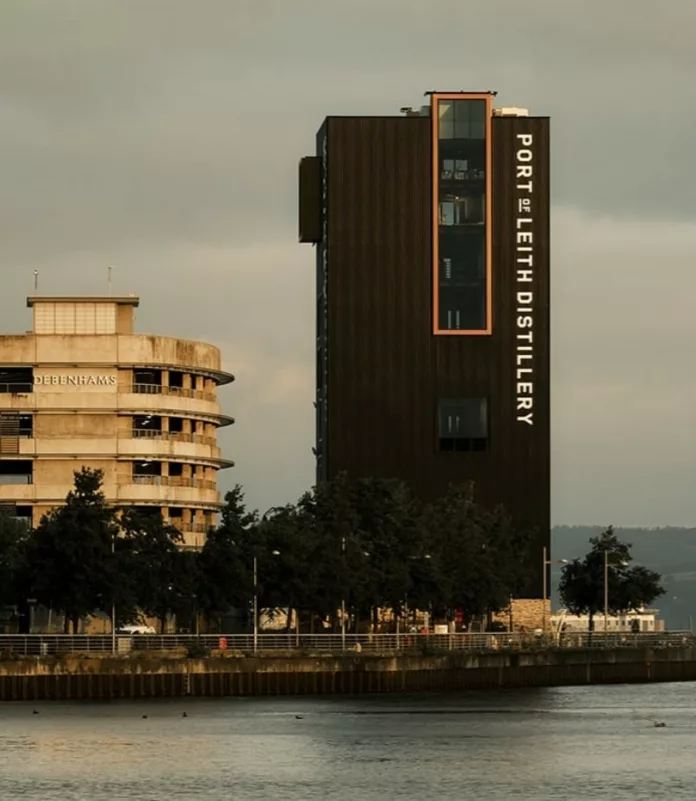In 2021 Time Out ranked Leith 4th coolest neighbourhood in the world. Pursuing a post-industrial Shoreditch blueprint, the area has undergone major regeneration over the last couple of decades and gone from wasteland to cultural hotspot.
For a long time, it was Scotland’s port to the world and the country’s industrial leader for glass, lead, whiskey, wine, and more. The success of the Americas and rise of Glasgow’s port ensured the loss of industry and slow decline of Leith. In the 1960s, around 85 bonded warehouses for wine and whiskey stood in the area, the last of which closed around 1995, leaving an industrial detritus of what it had once been. Abandoned warehouses with worn factory signs lined the streets, coupled with rising crime and poverty, it was desolate. Since the early 2000s, local creative communities have worked to restructure Leith. The opening of galleries and event spaces as well as investment in start-ups and locally sourced business ventures has worked to encourage tourism and maintain the industrious personality of the area.
I spoke to Ian Stirling, co-founder of The Port of Leith Distillery, about the transformation and success of Leith. As he and other local entrepreneurs agree, the area’s prosperity is owed to its community and subsequent cultural identity. The project is ‘like no other’, standing as Scotland’s first vertical distillery it boasts nine-storeys of modern architecture, and strictly locally sources its grains, products, and people. The distillery has been a ‘10-year odyssey’ for Ian and business partner Paddy. After growing up in Edinburgh and ending up in London post-university, they had formed a friendship (and a mutual love of whiskey) and moved home to begin the project. Ten years ago, with no whiskey distillery in Edinburgh, consistent annual tourism, and a plethora of brownfield sites in Leith, the opportunity was tempting.
It soon became clear this was more than building a distillery, it was breathing life back into an area that was once ‘at the epicentre of the Scottish whiskey industry’ and reigniting this important cultural heritage. It is about the people, the history, and the power of locally sourcing. They ‘wanted to make a building that excites the local community, and in the very nature of bringing back such a pivotal and historic industry to Leith was something that [they] knew would energise and excite the people who lived here’. For Ian, having grown up as Leith in the 90s ‘was very much down on its heels’, it is important within the business model to honour the area’s rich history whilst contributing its bright future.
This adds to a list of countless creative innovations bringing new food, drink, music, and art to Leith, flipping derelict dockyards and vast warehouses into community-led ventures. People’s love for the area’s historic integrity has largely denied threats from developers and worked to hone the preservation of a strong local identity. Subsequently, economies of start-ups and increasing tourism has helped with the regeneration, renewing itself as a must-visit area of Edinburgh.


